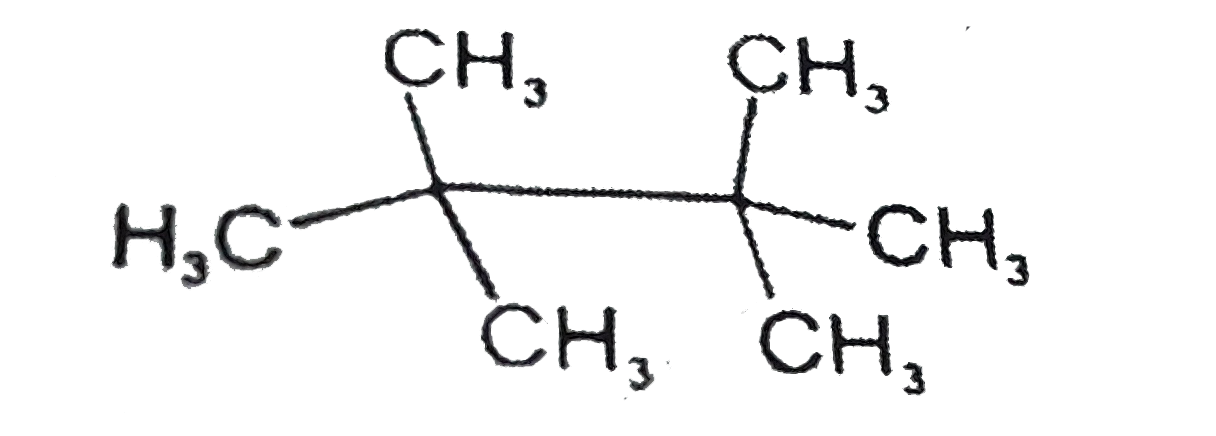A: Intermolecular Association is more in Primary amines than 2∘ & 3∘ amines.
R: More number of hydrogen atoms are available in Primary amines for hydrogen bonding.
If both Assertion & Reason are true and the reason is the correct explanation of the assertion, then mark (1).
If both Assertion & Reason are true but the reason is not the correct explanation of the assertion, then mark (2)
If Assertion is true statement but Reason is false, then mark (3)
If both Assertion and Reason are false statements, then mark (4)
The correct Answer is:1
To solve the question regarding the assertion and reason related to the intermolecular association in primary, secondary, and tertiary amines, we can break down the solution into clear steps:
1. Understanding the Assertion:
- The assertion states that "intermolecular association is more in primary amines than in secondary and tertiary amines."
- To evaluate this, we need to consider the structure of primary, secondary, and tertiary amines.
2. Analyzing Primary Amines:
- A primary amine has the general structure R-NH2, where R is an alkyl or aryl group.
- In primary amines, the nitrogen atom is bonded to two hydrogen atoms.
- Each hydrogen atom can participate in hydrogen bonding with the nitrogen of another amine molecule.
3. Analyzing Secondary Amines:
- A secondary amine has the structure R2-NH, where R can be the same or different alkyl or aryl groups.
- In secondary amines, there is only one hydrogen atom attached to the nitrogen.
- Thus, each secondary amine molecule can form only one hydrogen bond.
4. Analyzing Tertiary Amines:
- A tertiary amine has the structure R3-N, where all three substituents are alkyl or aryl groups.
- Tertiary amines do not have any hydrogen atoms attached to the nitrogen.
- Therefore, tertiary amines cannot form hydrogen bonds.
5. Comparing Intermolecular Hydrogen Bonding:
- Primary amines can form two hydrogen bonds per molecule due to the two available hydrogen atoms.
- Secondary amines can form only one hydrogen bond per molecule.
- Tertiary amines cannot form any hydrogen bonds.
- This indicates that intermolecular hydrogen bonding is strongest in primary amines, followed by secondary amines, and is absent in tertiary amines.
6. Understanding the Reason:
- The reason states that "more number of hydrogen atoms are available in primary amines for hydrogen bonding."
- This is correct because the presence of two hydrogen atoms in primary amines allows for more extensive hydrogen bonding compared to secondary and tertiary amines.
7. Conclusion:
- Both the assertion and reason are true.
- The reason provided correctly explains why the assertion is true.
- Therefore, the correct option is that both assertion and reason are true, and the reason is the correct explanation of the assertion.
Final Answer:
The correct answer is Option 1: Both assertion and reason are true, and the reason is the correct explanation of the assertion.
---
- The assertion states that "intermolecular association is more in primary amines than in secondary and tertiary amines."
- To evaluate this, we need to consider the structure of primary, secondary, and tertiary amines.
- A primary amine has the general structure R-NH2, where R is an alkyl or aryl group.
- In primary amines, the nitrogen atom is bonded to two hydrogen atoms.
- Each hydrogen atom can participate in hydrogen bonding with the nitrogen of another amine molecule.
- A secondary amine has the structure R2-NH, where R can be the same or different alkyl or aryl groups.
- In secondary amines, there is only one hydrogen atom attached to the nitrogen.
- Thus, each secondary amine molecule can form only one hydrogen bond.
- A tertiary amine has the structure R3-N, where all three substituents are alkyl or aryl groups.
- Tertiary amines do not have any hydrogen atoms attached to the nitrogen.
- Therefore, tertiary amines cannot form hydrogen bonds.
- Primary amines can form two hydrogen bonds per molecule due to the two available hydrogen atoms.
- Secondary amines can form only one hydrogen bond per molecule.
- Tertiary amines cannot form any hydrogen bonds.
- This indicates that intermolecular hydrogen bonding is strongest in primary amines, followed by secondary amines, and is absent in tertiary amines.
- The reason states that "more number of hydrogen atoms are available in primary amines for hydrogen bonding."
- This is correct because the presence of two hydrogen atoms in primary amines allows for more extensive hydrogen bonding compared to secondary and tertiary amines.
- Both the assertion and reason are true.
- The reason provided correctly explains why the assertion is true.
- Therefore, the correct option is that both assertion and reason are true, and the reason is the correct explanation of the assertion.
The correct answer is Option 1: Both assertion and reason are true, and the reason is the correct explanation of the assertion.
Similar Questions
Which statement is not true for primary amines
View SolutionThe substance that gives a primary amine on hydrolysis is
View SolutionHow will you obtain primary amine from phthalimide ?
View SolutionNumber of primary hydrogen is the given compound are

View SolutionWhich of the following is a primary amine .?
View SolutionPrimary (1∘) amine group is formed in :
View SolutionAcid anhydrides on reaction with primary amine gives…
View SolutionAcid anhydrides on reaction with primary amine gives…
View SolutionWhich one of the following will give a primary amine of hrdrolysis?
View SolutionHow will you prepare Primary amines from Alkyl Azide.
View Solution
